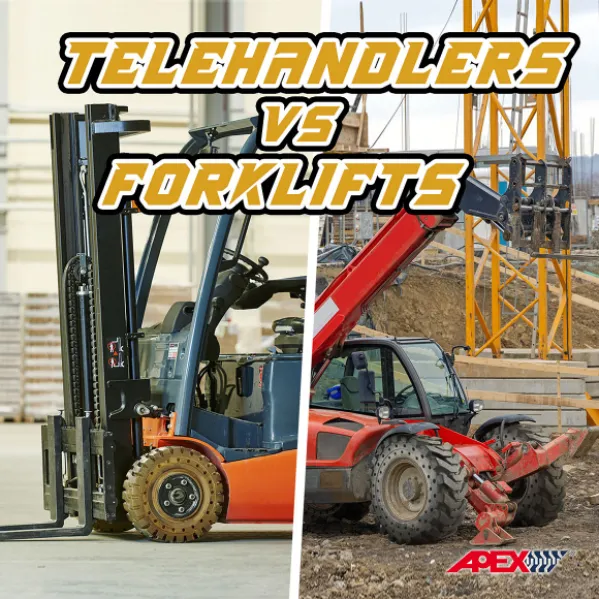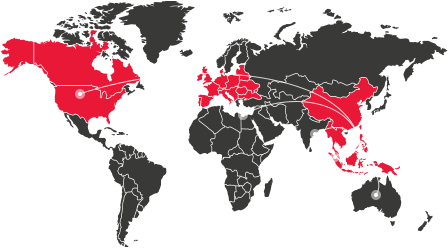Telehandlers and Forklifts: Key Differences

| Attachment | Capability | Compactness | Work Setting | Cost | |
| Telehandler | Multiple arm attachments | - Flexible - Greater versatility |
Generally bigger in size | Excellent for outdoor projects | High-Price |
| Forklift | Limited arm attachments | - Dependable control - Powerful functionality |
Quicker and easier to move | Preferably for warehouse and factory areas | Cost-Efficient |
Attachments
Forklifts typically have forks that lift vertically as well as move forward and back to place loads in different places. However, Telehandlers can move forward and backward without moving their base when placing loads. With attachments like hooks, scoops, and buckets, a telehandler can function as a small crane to carry various cargoes between sites. Both vehicles can also be attached with hooks, barrel loaders, sweepers, and augers, to concrete baskets, buckets, platforms, and manipulators, among others.
Capability
Telehandlers have more flexible ways of providing versatility on the job site, telehandlers frequently go beyond the capabilities of a traditional forklift.
Forklifts often raise objects vertically, while telehandlers lift objects sideways, backward, and forwards. They accomplish this by diagonally expanding its feature. Both machines can move and lift objects, but telehandlers are thought to be more versatile.
Compactness
When compared to a telehandler, forklifts are more swift and simple to maneuver. They are therefore a terrific option for maneuvering in narrow locations like warehouse aisles, and are a great alternative for unloading cargo from vehicles.
Work Setting
Telehandlers are better equipped to maintain stability in difficult terrain because of their triangular footprint. When operating a telehandler on a slope, hydraulic stability devices that are available on some models can be helpful. Telehandlers are commonly used on practically larger construction projects as a result of this.
In terms of warehouses and factories, forklifts take the spotlight. They typically require a lower initial investment and offer manufacturers and warehouses a variety of practical ways to transport cargo between racks, docks, vehicles, and job sites.
Cost
Depending on the size and capacity, forklifts are priced at approximately $20,000 to $45,000. The biggest factors that determine the cost of a new forklift are the class, capacity, and engine type. While local prices can differ considerably, a telehandler with a capacity of 5,000 to 6,999 pounds costs approximately $70,000 to $80,000. Telehandlers capable of lifting 7,000 to 9,999 lbs. cost around $90,000 to $100,000.
Find more about solid tires here:





